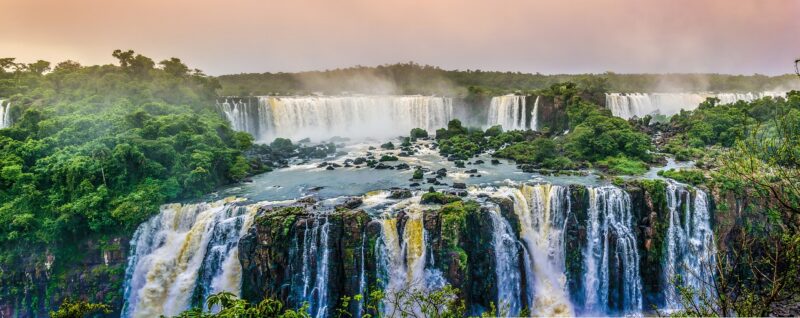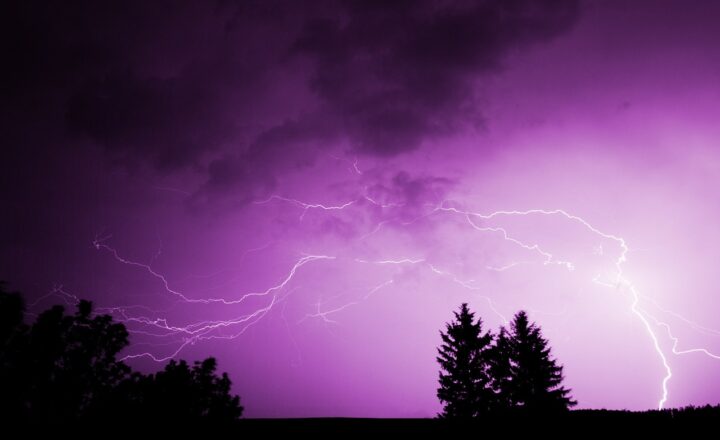How the Weather Shapes Landscapes: From Deserts to Rainforests
November 12, 2024

The Earth’s diverse landscapes are not merely a result of geological formations but are heavily influenced by weather patterns and climate conditions. From parched deserts to lush rainforests, weather plays an integral role in shaping the world’s environments. Understanding the interaction between weather and landscapes helps us appreciate the dynamic nature of our planet.
—
1. Introduction to Weather and Landscape Formation
Weather refers to the short-term atmospheric conditions in a particular area, whereas climate is the long-term pattern of weather in a specific location. Together, they dictate how landscapes develop over time, impacting vegetation, soil types, and geographical features.
For instance, a location that receives ample rainfall will likely support dense vegetation and fertile soils, resembling a rainforest. Conversely, arid regions with little rainfall will evolve into deserts, characterized by sandy soils and sparse plants. This article delves into the specific ways in which weather shapes landscapes, focusing on deserts and rainforests.
—
2. The Influence of Temperature and Precipitation
The two primary factors in weather that affect landscape formation are temperature and precipitation. These elements help to create distinct ecosystems characterized by unique plant and animal life.
#
2.1 Temperature
Temperature varies significantly across the globe, leading to different climatic zones, such as tropical, temperate, and polar regions.
– Tropical Regions: In areas where temperatures remain high and stable year-round, like the Amazon rainforest, weather encourages the proliferation of biodiversity. The warmth promotes growth in a variety of species, leading to a complex ecosystem.
– Arid Regions: On the other hand, extreme heat combined with minimal rainfall leads to desert formation. For example, the Sahara Desert’s scorching temperatures create a hostile environment where only specially adapted plants and animals can survive.
#
2.2 Precipitation
The amount of precipitation a region receives is critical in determining its ecological characteristics.
– Rainforests: Rainforests, such as the Amazon, receive an average of 1750-2000 mm of rain per year. This abundance of water allows for a diverse range of flora and fauna. The continual cycle of moisture promotes plant growth, which in turn supports a myriad of animal species.
– Deserts: In stark contrast, deserts receive less than 250 mm of rainfall annually, leading to dry, sandy terrain. The lack of water limits plant growth, often resulting in sparse vegetation. Only drought-resistant species, such as cacti and succulents, can thrive in these arid conditions.
—
3. Case Study: The Amazon Rainforest
The Amazon Rainforest is a prime example of how conducive weather conditions lead to lush, vibrant landscapes.
#
3.1 Climate and Biodiversity
The Amazon’s tropical climate features high temperatures and high humidity, along with significant annual rainfall. Such conditions support one of the richest ecosystems on Earth, home to millions of species, including:
– Over 16,000 tree species
– 2.5 million insect species
– 400 billion individual trees
The Amazon also plays a crucial role in regulating global climate patterns by absorbing large amounts of carbon dioxide.
—
4. Case Study: The Sahara Desert
In contrast, the Sahara Desert allows us to explore the landscape’s development under severe weather conditions.
#
4.1 Arid Conditions
The Sahara spans across 11 countries in North Africa, characterized by its extreme aridity and stark temperature fluctuations. The annual rainfall is minimal, and coupled with intense heat, this leads to:
– Limited Fauna: Life is restricted to a handful of hardy species like the dromedary camel and desert fox.
– Erosion Features: The landscape is marked by wind erosion, creating unique geological features such as sand dunes, rocky plateaus, and salt flats.
—
5. The Role of Winds in Shaping Landscapes
Winds are an important aspect of weather that contribute to landscape transformation, particularly in arid and coastal regions.
#
5.1 Erosion and Deposition
Winds can severely erode landscapes, carrying away loose soil and altering geographical features. As winds lose energy, they deposit the eroded materials, leading to the formation of:
– Dunes: Sandy deserts can develop vast dune systems, where sand particles are shaped and accumulated over time.
– Coastal Features: In coastal regions, winds can shape cliffs and create features like the famous white chalk cliffs of Dover.
—
6. Adaptation of Flora and Fauna to Weather Conditions
Both deserts and rainforests show remarkable adaptations of plants and animals, allowing them to thrive under their specific weather conditions.
#
6.1 Rainforest Adaptations
Plants in rainforests typically possess:
– Broad Leaves: To capture maximum sunlight in the canopy layer.
– Rapid Growth Rates: To compete for sunlight and resources in a densely populated environment.
Animals may exhibit adaptations like vibrant coloration for camouflage and specific feeding strategies to thrive in the biodiverse ecosystem.
#
6.2 Desert Adaptations
In deserts, flora and fauna exhibit adaptations such as:
– Water Storage: Cacti and succulents store water in their stems to survive long dry periods.
– Behavioral Changes: Many desert animals, such as the fennec fox, are nocturnal, avoiding the extreme heat of the day.
—
7. Conclusion: The Interconnectedness of Weather and Landscapes
Weather, in both its immediate and long-term forms, has a significant impact on how our planet’s landscapes evolve. By understanding these influences, we gain insight into the importance of preserving diverse ecosystems and their unique weather patterns.
Recognizing the delicate balance between climate, weather, and geography will be crucial as we face the challenges of climate change and environmental degradation. Each ecosystem, whether a vibrant rainforest or a barren desert, plays an important role in the health of our planet.
Thus, while weather continually shapes and reshapes our world, the responsibility lies with us to ensure that these landscapes—and the intricate life forms they harbor—are respected and preserved for generations to come.







